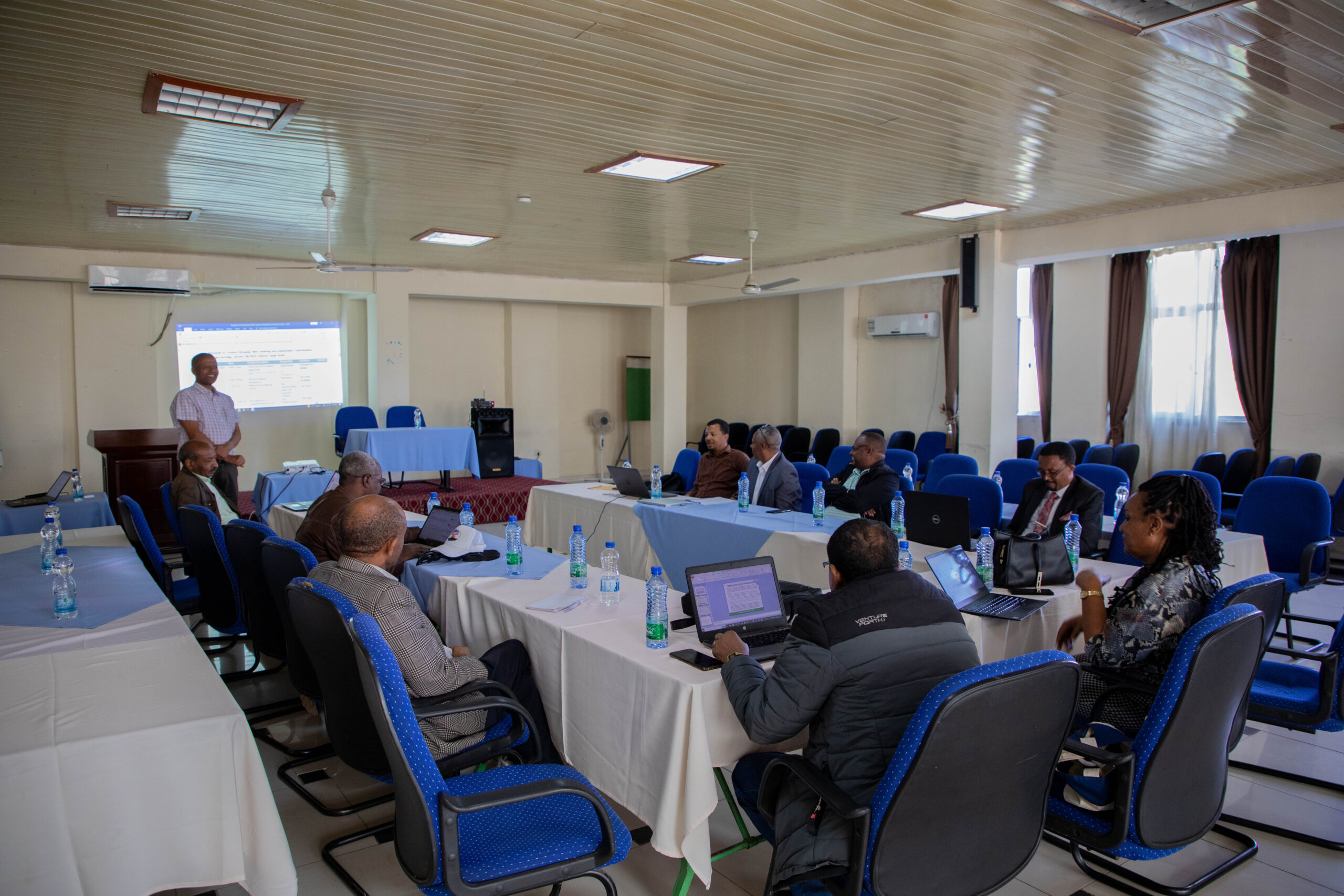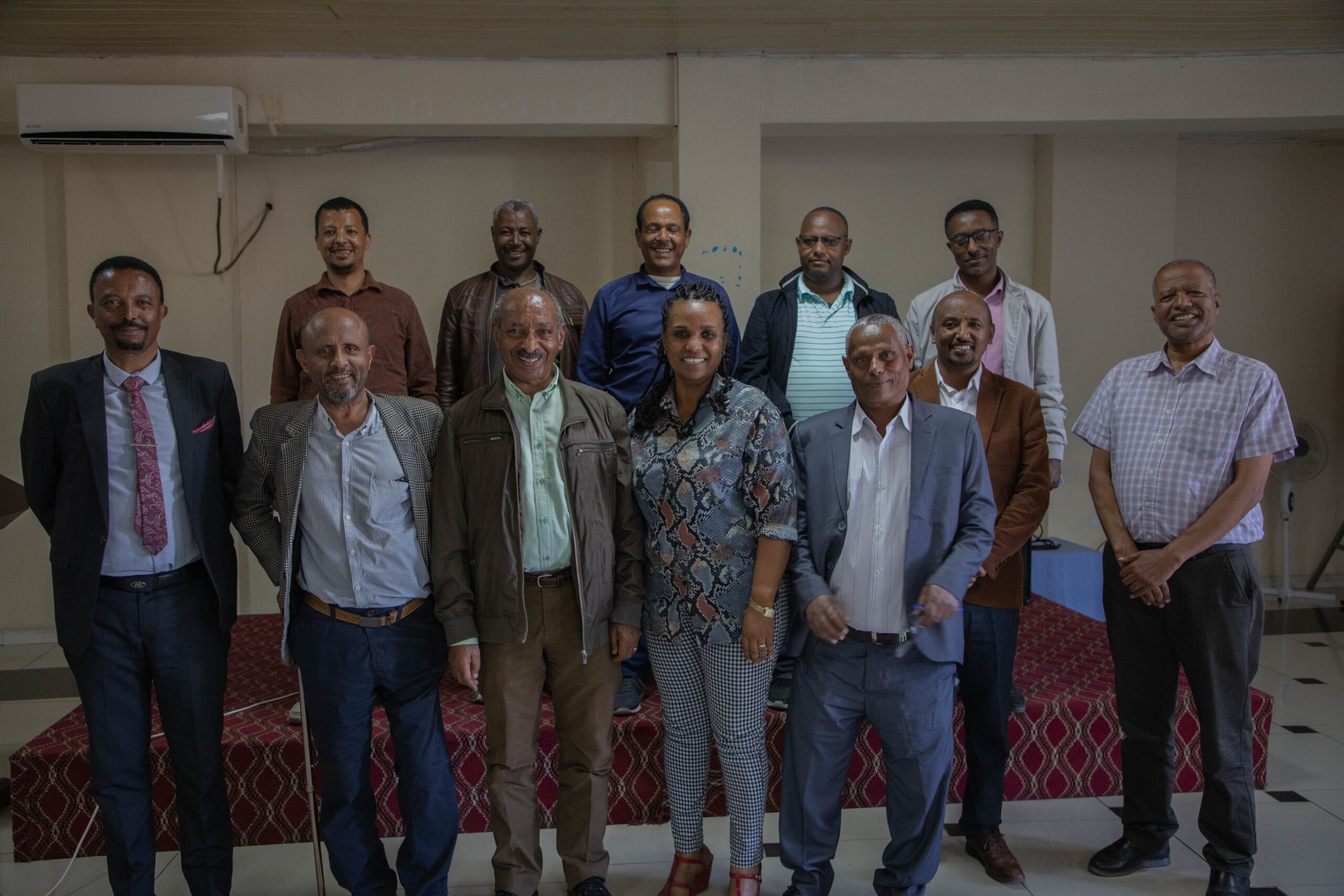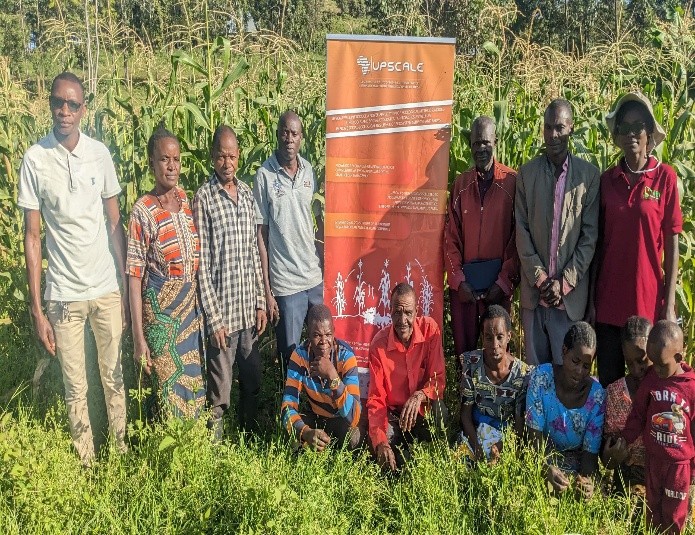The Ethiopian MAC meeting was organized with the objectives of increasing networking particularly with key personnel in the Ministry of Agriculture who are in apposition to influence in up scaling the benefit of push pl technology at national level. The meeting participants have included the MAC management committee members and selected main executive officers under the Ministry of Agriculture. This engagement of the main executive officers in the meeting is believed to increase the participation and decision-making process for national uptake of the push-pull technology in the government extension system. This joint meeting organized was also a means to check the current level of understanding by the relevant bodies of the ministry about the impact of the technology in sustainable farming system and its wider implication of improving agro-ecosystem at different levels. Furthermore, the meeting output/outcome brought useful insights in-terms of realizing the process of Desmodium seed value chain works in Ethiopia. The overall discussions made following the different presentations was adding value on how to strengthen the Ethiopian MAC platform and improve the governance structure of the MAC management. The available budget to organize the joint meeting was limited and ISD took a decision to collaborate with PELUM Ethiopia to raise additional fund to cover the meeting costs.
Activities Accomplished
For enhancing the role of MAC at national level and strengthen networking the following presentations were delivered by ISD and the partner consortium organization (PELUM-Ethiopia).
- ISD experience in Push pull technology dissemination, the case of South Wollo interventions.
After a brief welcome speech and opening remark, Mr. Ghebremedhin Belay shared what ISD has been doing to scale out push-push pull technology in partnership with local extension offices in South & North Wollo as well as partnership established to address research gaps with Wollo, Weldia and Debremarkos universities.
In the presentation, the total production potential covered with cereal crops in general and the two food crops (maize and Sorghum) in Ethiopia indicated figuratively the major pest challenges in the production corridors. The 6 Ethiopian Agro-climatic zones highlighted indicate the main crop zone distributions were mentioned.
Specifically, his presentation focused 2016-2018 experience of ISD in scaling up PPT in South Wollo Zone. The plan was to reach 520 smallholder farmers and ISD managed to train 399 out of which 388 farmers have implemented the technology from which 305 farmers were found successful as indicated in the presentation. In the presentation is was indicated that ISD did a lot in:
- knowledge transfer and capacity building to implement PPT for the control of stem borer and parasitic weed Striga, in which farmers and agri. experts have benefited
- the quantity of PPT inputs supplied to farmers
- increasing efficiency of farmer training centers (FTCs) to serve farmers interests
- How the PPT implementation improved crop yield compared to non-PPT fields and other environmental benefits of the technology
Finally, Ato Ghebremedhin has shown in his presentation about the general opportunities and potentials in integrating PPT to the government extension system and sharing the lessons drawn out of the implementation of PPT activities for further scaling of the technology.
- Updates about MAC establishment and its function in Ethiopia
The background about MAC formation related to the UPSCALE project is presented by Mr. Gizaw G/Mariam, Program Manager of ISD and national MAC management team secretary. In the presentation, MAC’s integrative role in communication and knowledge-building strategy was highlighted. The logic behind MAC formation in terms of addressing the issues related to upscaling the benefit of PPT is explained and how MAC formation encompasses trans disciplinarily, inclusiveness and co-creation/co-design approaches to enhance its functional role is discussed.
The MAC framework for the upscale project briefed related to its role in developing a road map for PPT implementation, adoption, and impact creation. The presentation pinpointed how the knowledge under the different disciplines (science and social sciences) and the practically tested knowledge of farmers and other actors when brought to the platform contribute for sustainable intensification. The multifactor linkages in communication and knowledge building process presented and how it signifies the practical functionality of MAC.
The current composition and membership of the Ethiopian MAC platform and MAC management team illustrated to provide updates for the participants of the meeting and for getting further input ideas to strengthen the national platform. The main focus points under the MAC annual plan (what was planned for 2022) versus accomplishments were also discussed to show the progress made. Dr. Hailu has shared the current concerns about the critical challenges of soil conditions mentioning the continual depletion of soil organic matter and the negative impact of nitrogen on the uptake of other nutrients.
- Understanding Agroecology
PELUM Ethiopia is a consortium established in recent years in which ISD is a founding member. Since its establishment, it closely collaborates with the institute for sustainable development in working to promote ago-ecological farming practices primarily by enhancing participatory land use approaches in Ethiopia. The consortium supports the member organizations to share their experiences and also participate in different capacity building programs. It is with this partnership sense that ISD requested PELUM to provide financial support to organize MAC management meeting. Mutual consensus is reached to deliver a presentation on the MAC management meeting about what the concept of agroecology means for MAC members and the lead executive personnel mobilized from the Ministry of Agriculture. Dr. Hailu Araya, PELUM Ethiopia executive director and the chairperson of MAC made the presentation which focused on the following major points:
- General contexts of Ethiopian agriculture with an emphasis on soil condition
- The soil moisture pattern based on the agroecological zones (west to east) and the challenges of soil acidity, salinity, and challenges related to exploitative farming and overgrazing practices.
- History of soil enhancement practices in Ethiopia (farmers’ practices, artificial fertilizer generation, various Composting methods, Conservation tillage, ISFM, and agroecology) and the overall concern to soil management practices
- The basic definition of ago-ecology as stated by Altieri and the views of other scholars.
- The five levels of Agroecology which are characterized by agroecosystem and food system starting from zero level to level five discussed in the presentation.
level1: Adjustment through increasing efficiency or reduced utilization of resources
level2: adjustment through increased efficiency or reduced utilization of resources
level3: redesign the whole agro-ecosystem.
level4: re-establish connections between producers and consumers, develop alternative food networks, and level.
level5: rebuild the global food system so that it is sustainable and equitable for all.
The last part of the presentation has focused on the discussion about regenerative agriculture and the core principles in which most are aligned with the principles of agroecology which highlighted the active restoration of soil quality, biodiversity, ecosystems health, water quality while producing sufficient food of high nutritional quality

General discussion Session
Among the participants was Wro yenenesh Ego who is representing the Ministry of Agriculture and currently the main executive officer for horticulture and agriculture extension. She suggested that all the MAC members are men except me and this needs to be revised and more women be represented to enhance gender participation. MAC needs to set short and long goals to move towards scaling up the benefit of PPT. We also need to clearly indicate what is expected from each MAC member before the coming meeting. The other participant from the ministry (crop protection executive officer) suggested that, those participants who are represented from the Ministry of Agriculture are the right decision makers who can contribute towards institutionalizing PPT in the government agriculture strategy and plan, hence ISD needs to engage them in the future works. It is also advised that the MAC management committee should be chaired by representatives from the ministry that adds value for future works.
Clarification questions were also raised in the discussion about any unexpected consequences which can result from using Desmodium varieties introduced from foreign countries (exotic plants) and some of the agroecological practices presented by Dr Hailu. One of the challenges in using Desmodium in warm and hot climatic zones is moisture stress. What is the option suggested to disseminate PPT in such areas? From previous ISD work in disseminating PPT, it is reported that some farmers have been withdrawn from applying PPT why?
When we look in to the Ethiopian MAC members some institutions like Development Bank of Ethiopia are represented and it is unlikely that it contributes at this level but it is advisable to replace by other financial institutions which can fit in to the purpose. In the process of developing Desmodium seed value chain in Ethiopia, plant regulatory executive body is belonging to the Ethiopian Agriculture Authority under the current restructuring, hence it is good to make it MAC member. Participants have also been raised to know the varieties of Desmodium used under current PPT work and the kind of harvest technology that farmers are using. What is the plan from ISD side to scale out PPT? Push pull technology package consisting of Desmodium and Bracharia is not applicable to large, mechanized farms, what is the suggestion regarding this? Some questions like project integrity, exit strategy, and the research approaches about upscale project were also raised and discussed. After responding to the questions directed to the presenters, a general brainstorming and the need to emphasize on collaboration stressed with a forward looking to strengthen multi actors’ community /MAC/
Outputs of the Meeting
- The meeting has helped to enhance further collaboration and role play by the key executive officers from the Ministry of Agriculture to have lead role in the process of push pull technology dissemination through including in the list of agricultural technologies for further intensification of agricultural production. For this to happen best practices related to PPT practices need to be documented for fact-based knowledge sharing and continue on collaborative advocacy.
- Important advice came out that current MAC member institutions and the MAC management leadership needs to be revised based on the expected role and the change anticipated. Representations should include gender dimensions and the active role the representatives play along the course of networking and knowledge building strategy.
- Apart from the detailed discussion about the important roles played by the MAC platform members, the meeting participants have informed us of the legal procedures to be followed: obtaining the required document of the origin (exporter to Ethiopia) of the desmodium seed to document characterization and registration of about the Desmodium variety for final technology shopping and its inclusion in the extension system.
Recommendations
- At national level there is a need to properly document the best practices about the multipurpose role of PPT and avail information to influence decision making regarding technology inclusion which calls collaboration of partners and the ministry to provide evidence.
- Linkages and working to Qualify for the variety registration requirements through close collaboration with the variety registration body under the federal agriculture authority.
Conclusions
- Increasing linkages and collaboration adds value to future actions.
- Clear understanding of the steps in variety registration helps to shorten the process.
- MAC platform and its functional role strengthened when appropriate actors join & contribute.
- Documenting best practices of PPT to avail information and evidence for its appropriateness.



